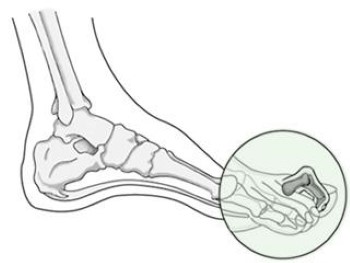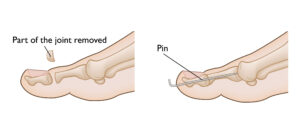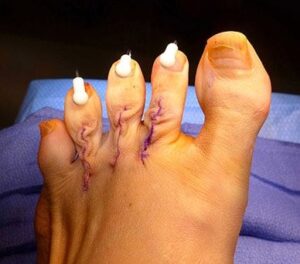Claw toe is a prevalent foot condition characterized by toes curling downward, resembling a claw-like shape. This deformity often causes the toes to press against the soles of your shoes, leading to discomfort and the formation of painful calluses. Without proper intervention, claw toe can progressively worsen, potentially resulting in a permanent deformity. Early diagnosis and treatment are crucial to prevent long-term complications and improve mobility
Anatomy
The forefoot consists of five toes, with each toe having three joints, except for the big toe, which typically has only two. In cases of claw toe, the affected toe bends abnormally at two key joints: the middle joint, known as the proximal interphalangeal (PIP) joint, and the last joint, called the distal interphalangeal (DIP) joint.
Causes
Claw toe is often associated with wearing footwear that constrains the toes, such as high heels or shoes that are too short. However, it is also commonly linked to nerve damage caused by conditions like diabetes, stroke, or chronic alcoholism, which weaken the foot’s muscles over time. Additionally, trauma or chronic inflammation can contribute to the development of this deformity.
Symptoms
Signs of claw toe include upward bending (extension) of the toe at the joints near the ball of the foot, combined with downward bending (flexion) at the middle joint toward the sole of the shoe. In some cases, the top joint of the toe may also curl downward, causing the toe to tuck under the foot. This abnormal positioning often leads to the formation of corns on the top of the toe or calluses under the ball of the foot, resulting in discomfort or pain.
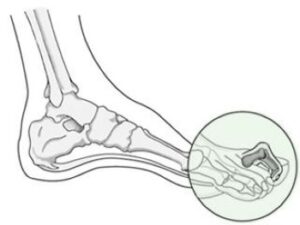 This claw toe digs down toward the sole of the shoe.
This claw toe digs down toward the sole of the shoe.
Doctor Examination
If you experience symptoms of claw toe, it’s essential to consult a doctor for a thorough evaluation. Diagnostic tests may be required to rule out neurological conditions that could weaken foot muscles and lead to imbalances causing the toes to bend. Trauma and inflammation are other potential causes of this deformity. Identifying the underlying issue is crucial, as it directly influences the treatment approach.
During the examination, your doctor will determine whether the clawing is flexible or rigid. In the early stages, claw toe deformities are typically flexible, but over time they can become stiff and fixed in place. Additionally, your doctor will assess the skin on your foot for calluses or breakdown, as these factors can impact the recommended treatment plan.
Treatment
For claw toe in its early stages, your doctor may suggest using a splint or tape to help hold the toes in their proper position. To alleviate discomfort and prevent progression, consider the following advice:
- Opt for shoes with soft, spacious toe boxes that allow ample room for your toes, and avoid tight-fitting shoes or high heels.
- Use your hands to gently stretch your toes and joints, encouraging them back to their normal alignment.
- Engage in toe-strengthening exercises, such as:
- Picking up marbles from the floor using your toes.
- Performing towel curls by placing a towel flat under your foot and using your toes to scrunch it.
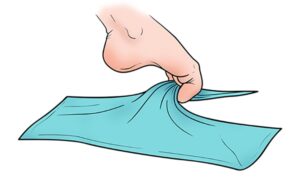 Doing “towel curls” can help strengthen the toes and restore muscle balance.
Doing “towel curls” can help strengthen the toes and restore muscle balance.

